An organizational chart helps navigate through the massive corporate machine. It shows everyone's duty, a direct chain of command, and how everyone fits together. It's a handy tool for managing in-house employees and those outsiders who want in on their piece of the pie. It is known to improve communication and help everyone understand their roles within the operation and the overall workflow.
This article will discuss these charts in detail, explain why they are so helpful, and offer some tips on how to make one. In the end, you'll come home knowing how each of these charts works and the detailed steps in making them.
In this article
What is Functional Organizational Structure
This part will delve into different functional organizational structures and their strength. Like the blueprint of a company, this part will detail how everything works.
Basic Information About Organizational Structure
An organizational structure is like a skeleton for a company. It holds everything together, supports and shows how different parts relate. When the massive corporate machine is up and running, it's all about categorizing people based on their skill sets and roles. This way, everyone with similar tasks sticks together, creating units or 'functions' like marketing, finance, or operations.
Choosing the proper functional structure can be beneficial. It promotes efficiency because similar tasks are done together. It also helps develop skill sets, as everyone on the same team shares a common expertise and experience. Plus, it encourages clear communication within operations, leading to better teamwork.
In a functional organization, roles are defined by the function or department. For example, a social media manager, content writer, or SEO specialist might be in the marketing department. In the finance department, there might be an accountant, a financial analyst, or a budget planner.

Subsidiary Branches of Functional Organizational Structure
There are different types of functional organizational structures, each having features of its own.
An Organization's Functional Top-Down Hierarchy Chart
A functional top-down hierarchy chart is like a giant pyramid. At the top of the pyramid sits the CEO at the helm of a company. Other high-level managers, such as vice presidents or senior directors, are just below the CEO. Moving further down comes middle-level managers, and at the base of the pyramid are the employees who do the leg work.
Each group or department in this setup has its own manager. This manager looks after everything within their jurisdiction and ensures the team performs smoothly. This setup is beneficial because everyone knows whom they report to and their role within the team.
However, there is a downside. Each department can get so wrapped up in its own goals that it forgets to collaborate with other departments. This can create barriers and hinder teamwork across the organization. The template below is made from EdrawMind to show you the typical layout of this structure. You can easily recreate it based on your current situation.
Divisional Organizational Chart
A divisional organizational chart is a bit different. In this type of chart, people are grouped by product, types of customers, or people's physical location instead of their role. Each group or division operates like a mini-company within the mother company. A general manager at the head of each division takes responsibility for their subordinates.
This setup is helpful in large organizations selling different products or markets because each division can focus on what it does best. But just like the functional structure, divisions can sometimes become too inward-focused and forget about the bigger picture. This can lead to poor coordination across divisions and hinder the organization's overall performance.
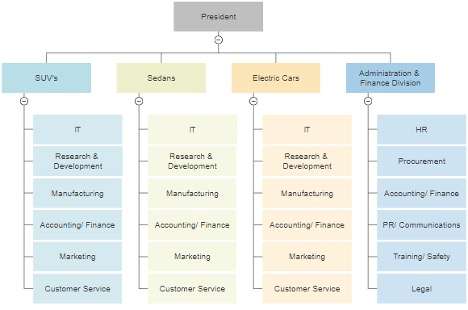
Matrix Organizational Chart
A matrix organizational chart is an interesting mix of functional and divisional structures. Within this type of structure, employees have two bosses - one for their active role (like marketing or finance) and another for the project they're working on.
This type of setup is great for companies that have to adapt quickly to changes because it allows for flexible resource allocation. But having two bosses can be challenging, and this structure requires careful management to avoid confusion and conflicts.
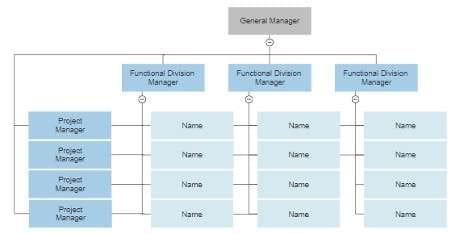
Flat Organizational Chart for an Organization
Lastly, there's the flat organizational chart. This type of structure is all about having fewer levels of management. Employees typically pay less attention to superior and subordinate liaisons and more to complete the work. It allows for quicker decision-making and an open dialogue because fewer vertical labor divisions exist.
However, as there are fewer managers, employees may need to take more initiative and make decisions independently. This can be empowering yet challenging if employees need more support or guidance.

How to Make a Functional Organizational Chart
EdrawMind is a practical mind-mapping tool that helps people arrange their thoughts, brainstorm new ideas, and create sleek presentations. It has many features that make creating refined mind maps and timelines a piece of cake.
Key Features of EdrawMind
- Pre-made Templates: EdrawMind has many useful templates, making it easy to jumpstart your organizational chart. Also, check out the MindMap Gallery for templates that other business owners have tried and tested.
- Drag-and-Drop Interface: Add photos, videos, and other elements to make your organizational charts more detailed. Add pictures of the people in the roles so they're easily identifiable. This way, new team members can acquaint other team members faster.
- Unlimited Canvas: EdrawMind offers a virtually infinite canvas for your timeline, which facilitates the creation of a more detailed organizational timeline.
- Zoom and Pan: As your business grows, the additional roles and responsibilities may hinder the navigation within the massive division chart. EdrawMind has a Zoom and Pan feature that allows you to see the bigger picture.
- Import and Export Options: After finishing your organizational chart, you can export your work to various file formats or import files and information from other apps to this timeline. The finished version is ready for printout as a backup for the back office.
- Collaboration and Sharing: EdrawMind supports teamwork. Real-time collaboration and sharing between business partners are fully supported.
Steps To Create a Functional Organizational Chart Using EdrawMind
To start creating your business' functional organizational chart, follow the steps below:
Step 1: Download and install EdrawMind from the official website.
Step 2: On the application's homepage, click Org Chart.
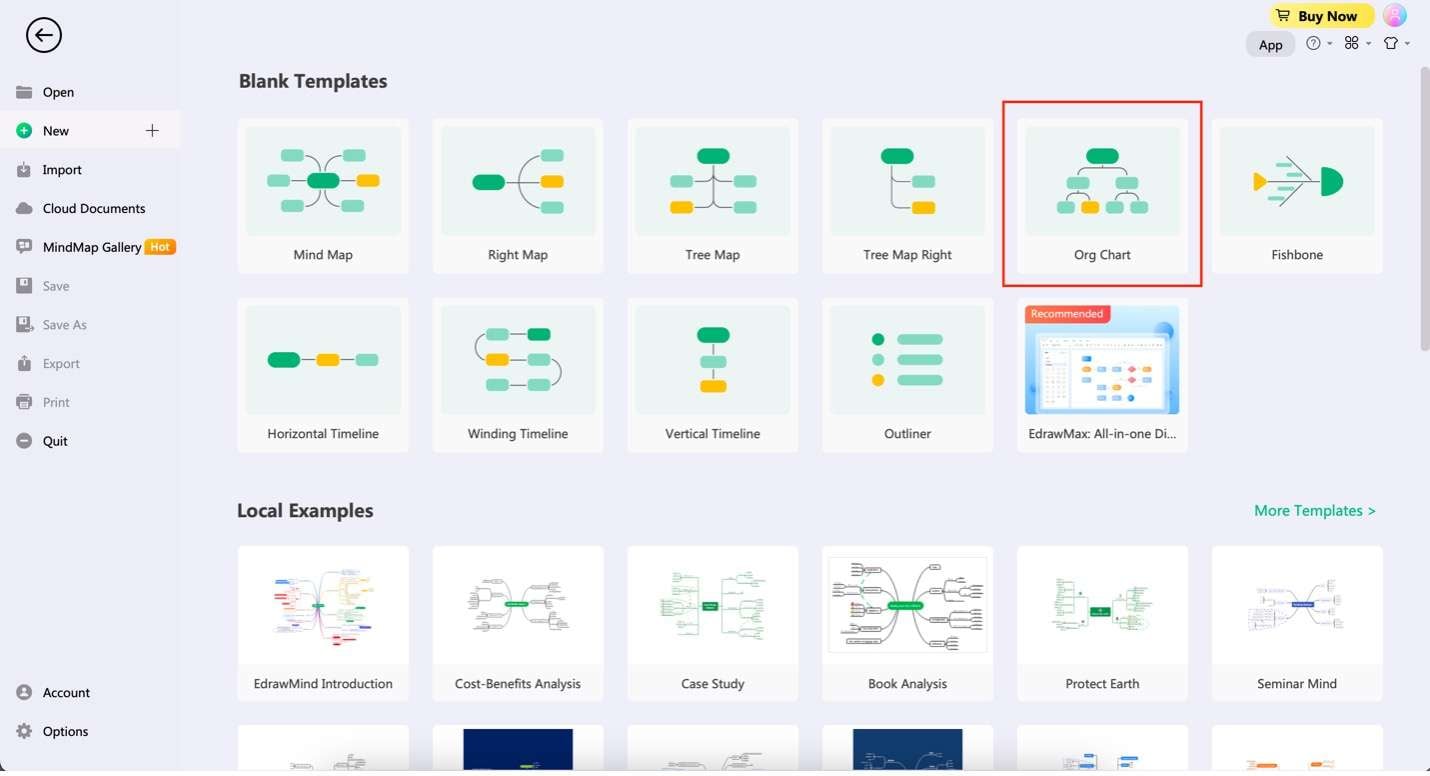
Step 3:To edit the content of the text boxes, double-click the text.

Step 4:Add downline roles by selecting the text box of a role and then clicking Subtopic on the Toolbar.
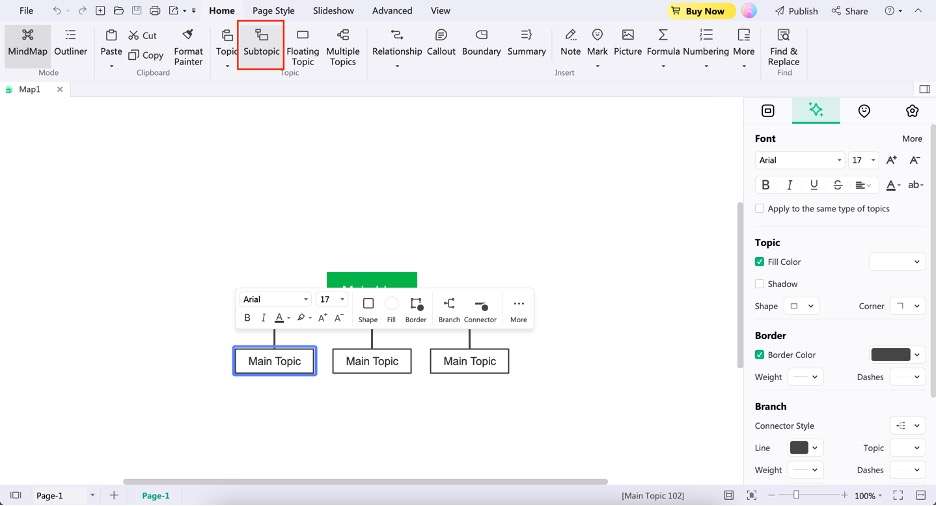
Step 5: Edit the new textboxes accordingly by double-clicking on them.
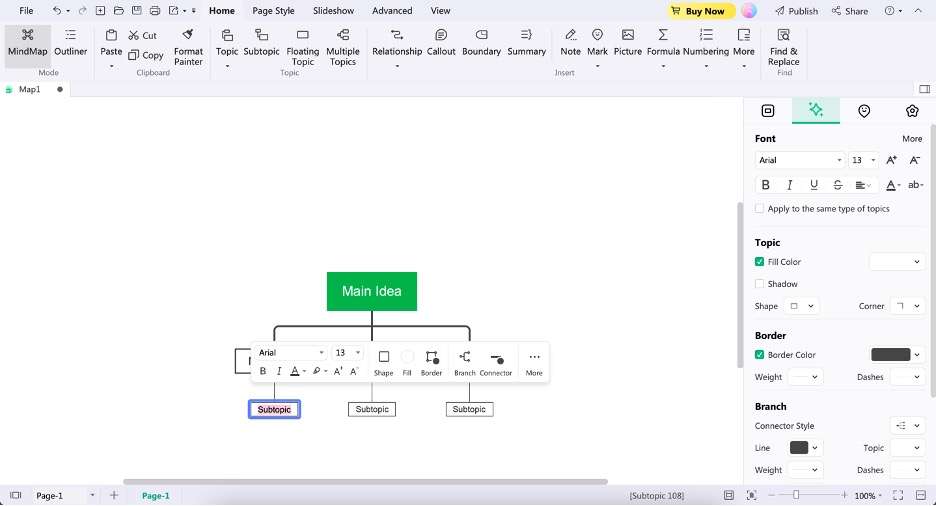
Note: Repeat Steps 3-5 as you add more roles to your organization. Be sure to explore EdrawMind for some hands-on experience.
Tips to Create an Effective Functional Organizational Chart
Creating a functional organizational chart that hits the mark involves several tips and tricks:
- Hierarchy is essential. It shows who is in charge of whom, indicating clear relationships between superior and subordinate.
- Consistency is your friend. Stick to the same format throughout your chart - keep your font size and colors the same for all labels.
- Give your chart some room to breathe. Appropriate spacing makes it easier to read and understand.
- Show who reports to whom accurately. Reflect on the actual chains of command in your organization.
- Keep your chart fresh. Review and update it regularly to ensure it mirrors your organization's current arrangement.
Key Role of Establishing Clear Chains of Command
A clear-defined organizational layout can guide employees in understanding their respective duties and help new hires adjust faster.
Benefits of Regularly Updates
- Ensures your chart is factually accurate.
- Help spot areas where it might need tweaking.
- Keeps employees posted about changes in the organization.
- Enhances employees' comprehension of their duties.
Keeping your chart regularly reviewed and updated is a healthy habit for the entire organization and, in turn, shows that this is a detail-oriented organization.
Conclusion
In conclusion, organizational charts prove their worth as they sketch out the structure of an organization in a direct manner. Like blueprints, it maps out their roles and duties and the chain of command that links them all together.
Creating these charts can be breezy with tools like the Org Chart feature in EdrawMind. Give it a try today to create your very own functional organizational chart!
In the end, a meticulous organizational chart can be a game changer. With a clear scope of responsibility and smooth communication, it is a life-saver for businesses of all sizes.



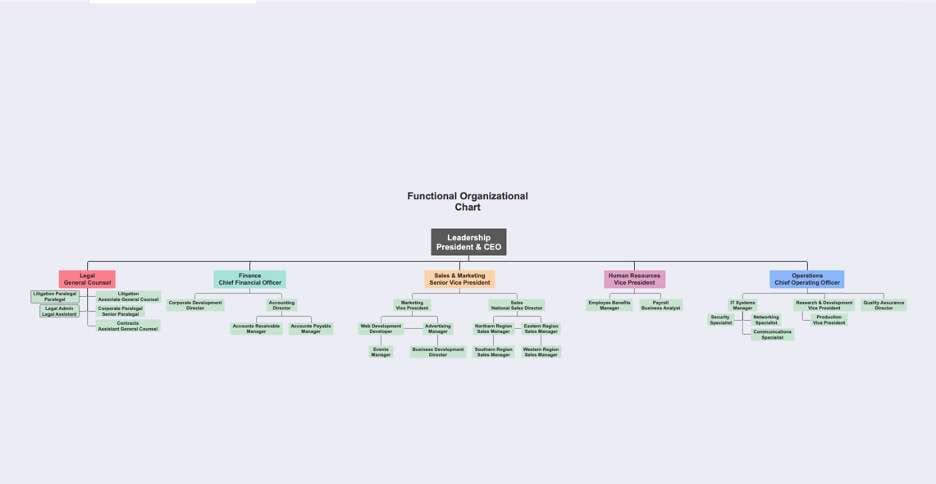
 below.
below.  below.
below. 

